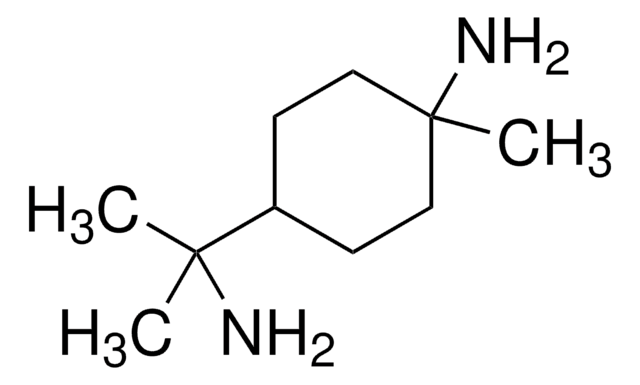Wichtige Dokumente
381675
Dytek® EP Diamin
98%
Synonym(e):
1,3-Diamino-pentan, 1,3-Pentandiamin
About This Item
Empfohlene Produkte
Qualitätsniveau
Assay
98%
Brechungsindex
n20/D 1.452 (lit.)
bp
164 °C (lit.)
mp (Schmelzpunkt)
−121 °C (lit.)
Dichte
0.855 g/mL at 25 °C (lit.)
SMILES String
CCC(N)CCN
InChI
1S/C5H14N2/c1-2-5(7)3-4-6/h5H,2-4,6-7H2,1H3
InChIKey
WTSXICLFTPPDTL-UHFFFAOYSA-N
Suchen Sie nach ähnlichen Produkten? Aufrufen Leitfaden zum Produktvergleich
Rechtliche Hinweise
Signalwort
Danger
H-Sätze
Gefahreneinstufungen
Flam. Liq. 3 - Skin Corr. 1B
Lagerklassenschlüssel
3 - Flammable liquids
WGK
WGK 3
Flammpunkt (°F)
138.2 °F - closed cup
Flammpunkt (°C)
59 °C - closed cup
Persönliche Schutzausrüstung
Faceshields, Gloves, Goggles, type ABEK (EN14387) respirator filter
Hier finden Sie alle aktuellen Versionen:
Besitzen Sie dieses Produkt bereits?
In der Dokumentenbibliothek finden Sie die Dokumentation zu den Produkten, die Sie kürzlich erworben haben.
Kunden haben sich ebenfalls angesehen
Unser Team von Wissenschaftlern verfügt über Erfahrung in allen Forschungsbereichen einschließlich Life Science, Materialwissenschaften, chemischer Synthese, Chromatographie, Analytik und vielen mehr..
Setzen Sie sich mit dem technischen Dienst in Verbindung.















